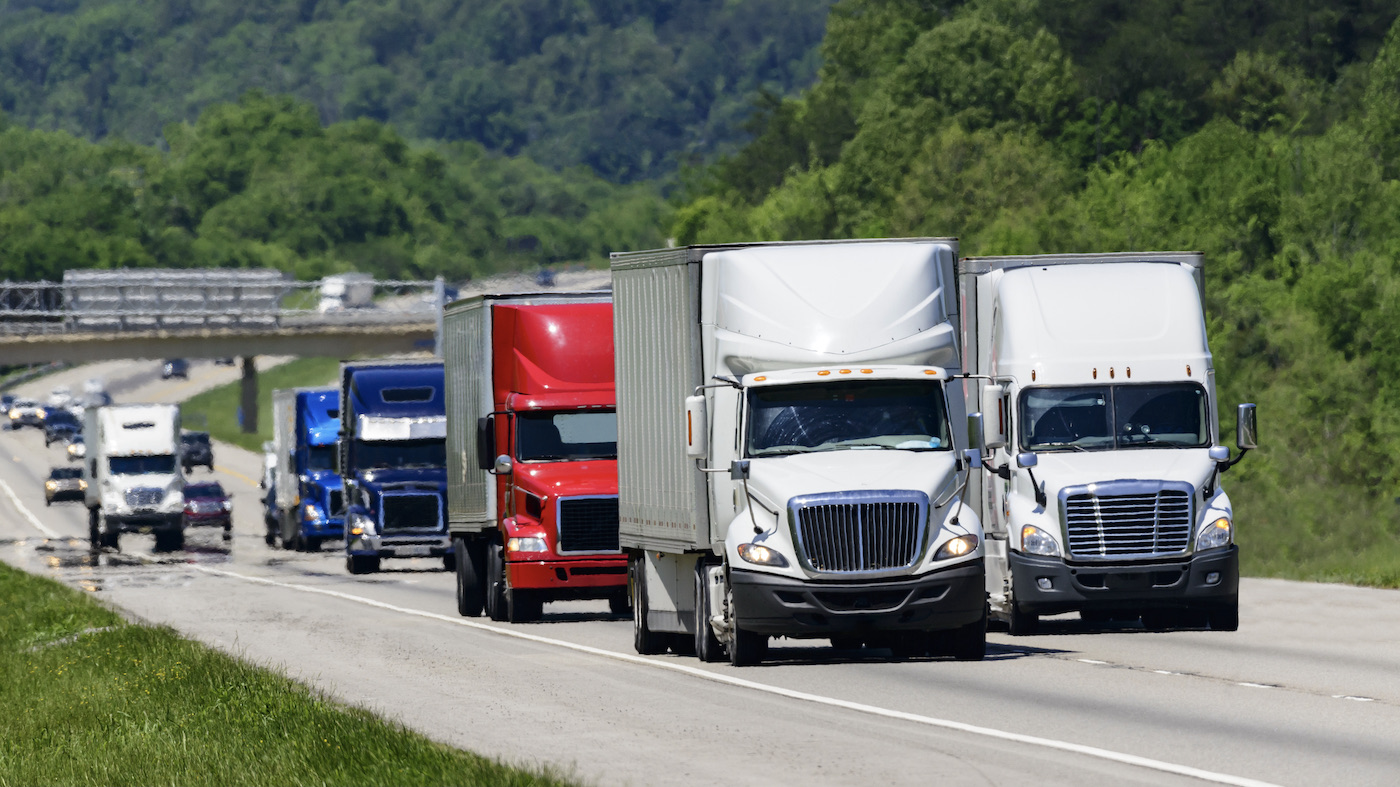Maintaining a proper space cushion is crucial for commercial vehicle safety to ensure the well-being of both commercial drivers and others on the road. But to fully understand the importance of a space cushion for commercial drivers, let’s start with the basics. What is a space cushion?
What is a space cushion in trucking and field services?
A space cushion refers to providing safe and adequate space between a commercial vehicle and other vehicles on the road. Maintaining a proper space cushion helps prevent accidents, allows for better reaction time, and minimizes the risk of collisions.
What is the purpose of a space cushion?
The purpose of maintaining a space cushion is multifaceted, but is mostly centered around safety. The following space cushion examples highlight why it’s integral for fleet safety as well as the importance of including this best practice in daily operation, regardless of vehicle type or industry.
Following distance
Following distance is the space cushion between the front of a vehicle and the rear of the vehicle in front of it. The recommended following distance varies based on speed, road conditions, weather, and even vehicle type. Trucks, for instance, need a longer distance to come to a complete stop due to their size and weight. Therefore, maintaining an appropriate following distance is especially critical for larger vehicles in order to ensure enough time to react to changing conditions on the road.
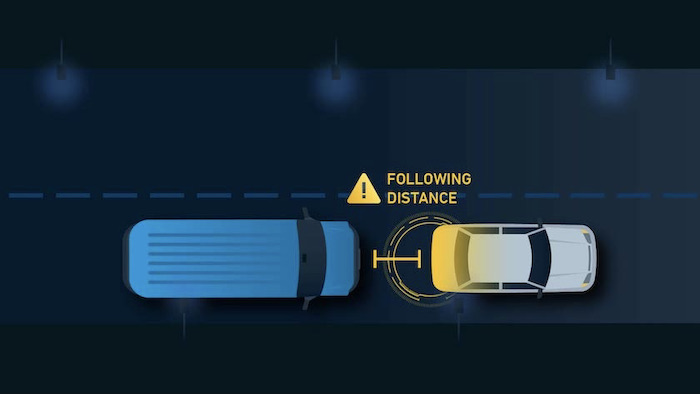
Side space
Drivers also need to maintain a sufficient space cushion on either side of the vehicle. This helps prevent collisions with adjacent vehicles during lane changes or unexpected movements.
Rear space
Ensuring there’s an adequate space cushion behind the vehicle is also important, especially when it comes to being aware of vehicles attempting to merge or pass.
What is the benefit of a space cushion around your vehicle?
Maintaining a proper space cushion for commercial drivers is a fundamental aspect of defensive driving. It provides the commercial driver with more time to react to unexpected situations, such as sudden stops, lane changes, or obstacles on the road.
Adequate space cushion management is a critical component of overall road safety, and it is emphasized in driver training programs and safety protocols within trucking, field services, and other commercial fleet types.
The key advantages of space cushion best practices include:
Collision prevention
A proper space cushion provides drivers with more reaction time to unexpected events, reducing the risk of rear-end collisions and other accidents.
Increased visibility
Maintaining a space cushion enhances visibility for both the fleet vehicle's driver and other road users, reducing blind spots and promoting overall situational awareness.
Emergency maneuverability
A sufficient space cushion allows drivers to execute emergency maneuvers more effectively, such as evasive actions or sudden braking without risking collisions.
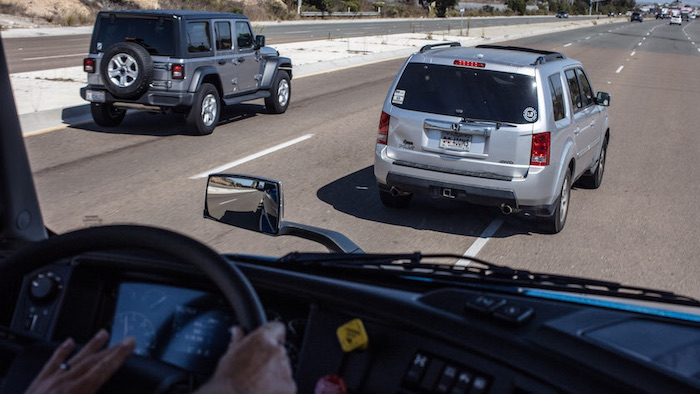
Fewer traffic violations
Adhering to proper space management practices helps prevent traffic violations and citations related to tailgating or unsafe following distances, minimizing legal complications for the fleet.
Reduced stress and fatigue
Drivers experience less stress and fatigue when they have a comfortable space cushion, as it provides a buffer against constant changes in speed and abrupt stops.
Improved fuel efficiency
Consistent and smooth driving, facilitated by a well-maintained space cushion, can contribute to improved fuel efficiency. Avoiding unnecessary acceleration and deceleration helps conserve fuel.
Compliance with regulations
Maintaining a proper space cushion ensures compliance with safety regulations and standards. Many jurisdictions have specific rules regarding following distances for commercial vehicles.
Reputation management
A fleet that consistently practices safe space management portrays a positive image to the public and customers. It reflects a commitment to safety and responsible driving practices.
Reduced wear and tear
Operating vehicles with a reasonable space cushion can contribute to reduced wear and tear on brakes, tires, and other critical components, extending the lifespan of the fleet.
Insurance benefits
Consistent adherence to safe driving practices, including maintaining a proper space cushion, can lead to lower insurance premiums and a positive reputation with insurance providers.
Driver satisfaction and retention
Drivers are more likely to be satisfied and less stressed when they have the space needed to operate their vehicles safely. This, in turn, contributes to higher driver retention rates and better employee morale. 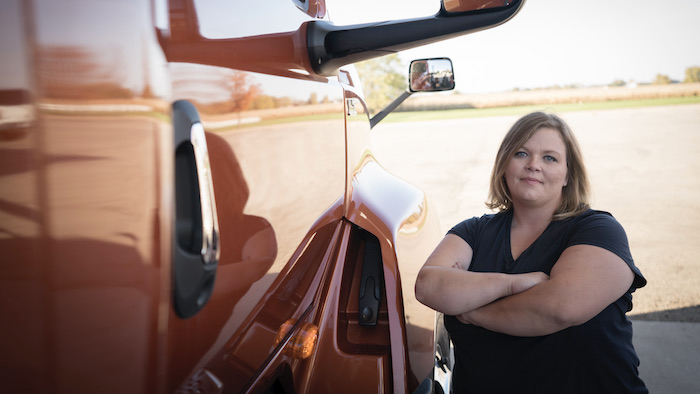 In summary, the benefits of maintaining a space cushion around fleet vehicles extend beyond safety, positively impacting operational efficiency, driver well-being, and the overall image of the fleet within the industry. Integrating space management into training programs and safety protocols can be crucial for realizing these advantages.
In summary, the benefits of maintaining a space cushion around fleet vehicles extend beyond safety, positively impacting operational efficiency, driver well-being, and the overall image of the fleet within the industry. Integrating space management into training programs and safety protocols can be crucial for realizing these advantages.
What is a good space cushion length for commercial vehicles?
The appropriate space cushion for commercial vehicles, including trucks and smaller vehicles, depends on various factors such as the speed of the vehicles, road conditions, weather, and the type of traffic. However, a common guideline for maintaining a safe following distance is the "three-second rule" or the "four-second rule."
Three-second rule for space cushion
- Select a fixed point on the road, such as a road sign or a pavement marking, ahead of the vehicle in front of you.
- When the rear of the vehicle in front of you passes the fixed point, start counting: One thousand one, one thousand two, one thousand three.
- If you reach your chosen fixed point before completing the count of three, you are following too closely and should increase your following distance.
Four-second rule (recommended by the FMCSA for large commercial vehicles)
For large commercial vehicles, such as those with tractor trailers, a larger space cushion of 4 seconds (or more) is recommended given the length and weight of larger vehicles.
- Select a fixed point on the road.
- When the rear of the vehicle in front of you passes the fixed point, start counting: One thousand one, one thousand two, one thousand three, one thousand four.
- If you reach your chosen fixed point before completing the count of four, increase your following distance.
Truck space cushion when entering the freeway
Trucks entering the freeway must take into account many things when calculating the space cushion appropriate for their rig. While the three- and four-second rules still apply, drivers must yield to traffic, follow the rules of the acceleration lane, adjust following distance for speed, be aware of blind spots, and be aware of further traffic conditions like:
Weather conditions
In adverse or seasonal weather conditions such as rain, snow, or fog, increase the following distance to allow for reduced visibility and longer stopping distances.
Type of road
Consider the type of road you are on. For example, on highways, higher speeds may necessitate a larger following distance.
Vehicle weight
Heavier vehicles, such as commercial semi trucks, generally require more time and distance to come to a complete stop. Consider the weight and braking capabilities of the commercial vehicle.
Traffic density
Adjust the following distance based on the density of traffic. In heavy traffic, maintaining a consistent space cushion may be challenging, but it remains important for safety.
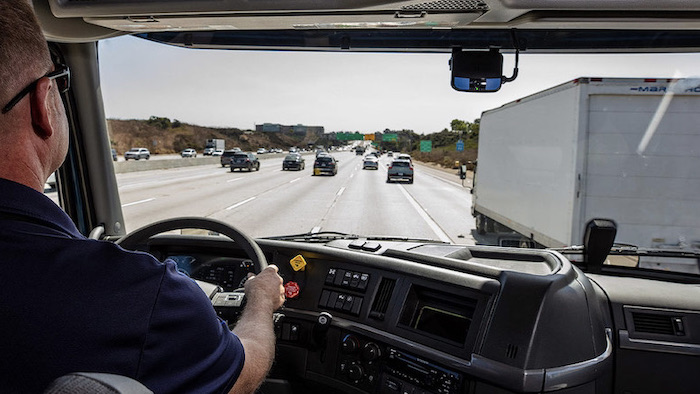 It's important to note that these rules provide general guidelines. Drivers should always be prepared to adjust their following distances based on specific circumstances. Safe driving practices, awareness of surroundings, and the ability to adapt to changing conditions contribute to overall road safety for commercial vehicles.
It's important to note that these rules provide general guidelines. Drivers should always be prepared to adjust their following distances based on specific circumstances. Safe driving practices, awareness of surroundings, and the ability to adapt to changing conditions contribute to overall road safety for commercial vehicles.
Drivers should also be aware of, and comply with any specific regulations regarding following distances in the regions where they operate.
Space cushion system for fleets and commercial drivers
In order to implement tactics and best practices for space cushion systems in fleets of all sizes, many trucking and field service companies create a program that keeps the topic top of mind. Elements of these kinds of programs include:
Training and education
Provide comprehensive training for drivers on safe following distances and space management. Emphasize the importance of maintaining a proper space cushion in various driving conditions.
Regular safety meetings
Conduct regular safety meetings to reinforce the importance of maintaining safe following distances. Discuss real-life examples and share experiences to enhance awareness.
Technology utilization
Invest in advanced safety technologies, such as collision avoidance systems and adaptive cruise control, to assist drivers in maintaining safe distances. Ensure proper maintenance and calibration of these systems.
Driver monitoring
Implement systems to monitor driver behavior, including following distances, and provide feedback or corrective action when necessary. Reward safe driving practices to encourage adherence to company policies.
Established policies
Develop and enforce clear company policies regarding following distances and space management. Include consequences for violations to create accountability.
Inclement weather protocols
Train drivers on how to adjust their space cushion in adverse or seasonal weather conditions, such as rain, snow, or fog. Encourage increased following distances during challenging weather situations.
Regular vehicle maintenance
Ensure that all vehicles are properly maintained, with special attention to brakes and tires, as these directly impact a truck's ability to maintain a safe space cushion.
.jpg)
Route planning
Encourage route planning that considers traffic patterns and weather data to minimize the need for abrupt stops or changes in speed. Provide alternate routes when necessary.
Observational mindset
Ensure drivers are observant of fellow motorists’ communications such as vehicle flashers or flashing headlights.
Encourage defensive driving
Promote a culture of defensive driving, where drivers anticipate potential risks and maintain a proactive approach to safety. Provide incentives for drivers who consistently exhibit safe driving practices.
Monitoring and feedback
Regularly monitor and assess driver performance in terms of maintaining safe following distances. Provide constructive feedback and additional training if needed.
Compliance with regulations
Ensure compliance with all relevant safety regulations, including those related to following distances and space management.
Final thoughts
By implementing these space cushion best practices, commercial fleets can contribute to a safer road environment and reduce the risk of accidents caused by inadequate space cushion management. Regular training, communication, and the use of technology are key elements in fostering a culture of safety within the organization.
To learn more about fleet tracking management technologies and our space cushion system options for fleets , contact us or book a demo today.
